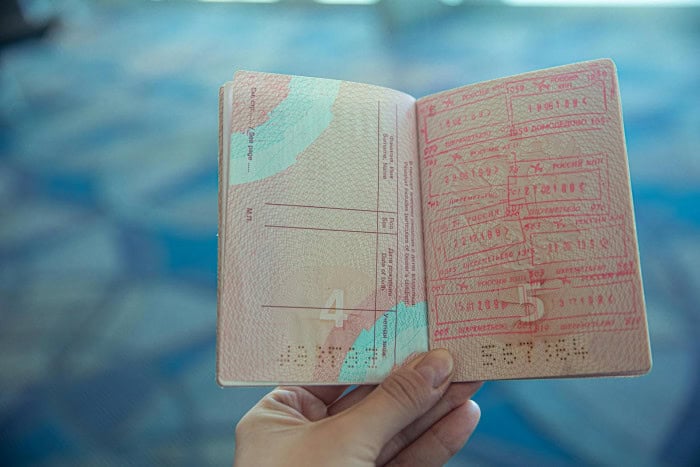Family-based immigration is one of the most common ways individuals gain permanent residency in the United States. This process allows U.S. citizens and lawful permanent residents (LPRs) to sponsor close family members to live and work in the U.S. permanently. However, the journey can be complex and requires a clear understanding of the requirements, processes, and potential obstacles. This guide provides a comprehensive overview of the steps involved and the critical information families need to navigate the system successfully.

1. Immigration Options for Victims of Crime or Abuse
Victims of crime or abuse have specific pathways to secure legal status in the U.S., enabling them to seek safety and stability. These provisions aim to protect individuals who have suffered from violence or exploitation and who assist law enforcement in the investigation or prosecution of crimes. One example includes U Visas, designed for victims of crimes like domestic violence, human trafficking, or other qualifying crimes. Similarly, VAWA (Violence Against Women Act) allows certain abused spouses, children, or parents to self-petition for legal status without relying on the abuser. In the process of obtaining immigration benefits, some victims may also explore GREEN CARDS FOR VICTIMS OF CRIME OR ABUSE as part of their legal pathway. This approach ensures that individuals not only find protection but also build a secure future in the United States. While these options differ from traditional family-based immigration, they illustrate the compassionate measures embedded in U.S. immigration policy to assist vulnerable populations.
2. Understanding Immediate Relative and Family Preference Categories
Family-based immigration is divided into two main categories: immediate relatives and family preference. Immediate relatives include spouses, unmarried children under 21, and parents of U.S. citizens. These individuals do not face numerical visa limits, making the process generally faster. If you are looking to speed up your visa processing, understanding the category you fall into and meeting all requirements promptly can make a significant difference.
On the other hand, the family preference system applies to more distant relatives, such as married children or siblings of U.S. citizens and certain relatives of LPRs. These categories are subject to annual visa quotas, leading to potential delays due to backlogs. Understanding which category applies is crucial when initiating the process, as it determines processing times and the necessary documentation.
3. Filing the Petition: Form I-130
The first step in family-based immigration is filing Form I-130, Petition for Alien Relative. This form establishes the familial relationship between the petitioner (U.S. citizen or LPR) and the beneficiary (the foreign relative). It is essential to include supporting documents, such as birth certificates, marriage certificates, and proof of the petitioner’s citizenship or residency.
Once the petition is filed, the U.S. Citizenship and Immigration Services (USCIS) reviews it for approval. After approval, the case is forwarded to either the National Visa Center (NVC) for consular processing or remains with USCIS for adjustment of status if the beneficiary is already in the U.S. Each case varies, so proper attention to the details of the petition is vital.
4. Navigating the Visa Bulletin and Priority Dates
For family preference categories, the Visa Bulletin plays a critical role in determining when a visa becomes available. The Visa Bulletin is issued monthly by the U.S. Department of State and lists the cut-off dates for each family preference category and country of origin.
Beneficiaries are assigned a priority date, which corresponds to the date the Form I-130 was filed. When the priority date becomes current, the beneficiary can move forward with the next step of the process, such as consular processing or adjustment of status. Families should regularly check the Visa Bulletin and work with an immigration attorney, if needed, to ensure they understand the implications of their priority date.
5. Consular Processing vs. Adjustment of Status
The next step depends on whether the beneficiary is inside or outside the U.S. Beneficiaries living abroad typically undergo consular processing, where they attend an interview at a U.S. embassy or consulate in their home country. This process includes submitting forms, paying fees, and undergoing a medical examination.
Beneficiaries already in the U.S. may qualify for an adjustment of status, allowing them to apply for a green card without leaving the country. However, this option is only available to certain individuals, and eligibility depends on factors such as lawful entry into the U.S. and current immigration status. Both processes require careful attention to deadlines and required documents.
6. Final Steps: Green Card Approval and Life as an LPR

Once the consular interview is successfully completed or the adjustment of status application is approved, the beneficiary receives their green card. This card grants them lawful permanent resident (LPR) status, allowing them to live and work in the U.S. indefinitely. As LPRs, individuals can eventually apply for U.S. citizenship through naturalization, provided they meet the residency and other eligibility requirements. Maintaining LPR status requires following U.S. laws, avoiding prolonged absences from the country, and renewing the green card when necessary.
Whether navigating family preference categories, helping victims of abuse secure legal status, or managing the complexities of the Visa Bulletin, families benefit from staying informed and seeking professional guidance when needed. By following the process with diligence, families can achieve their dream of building a life together in the United States.

